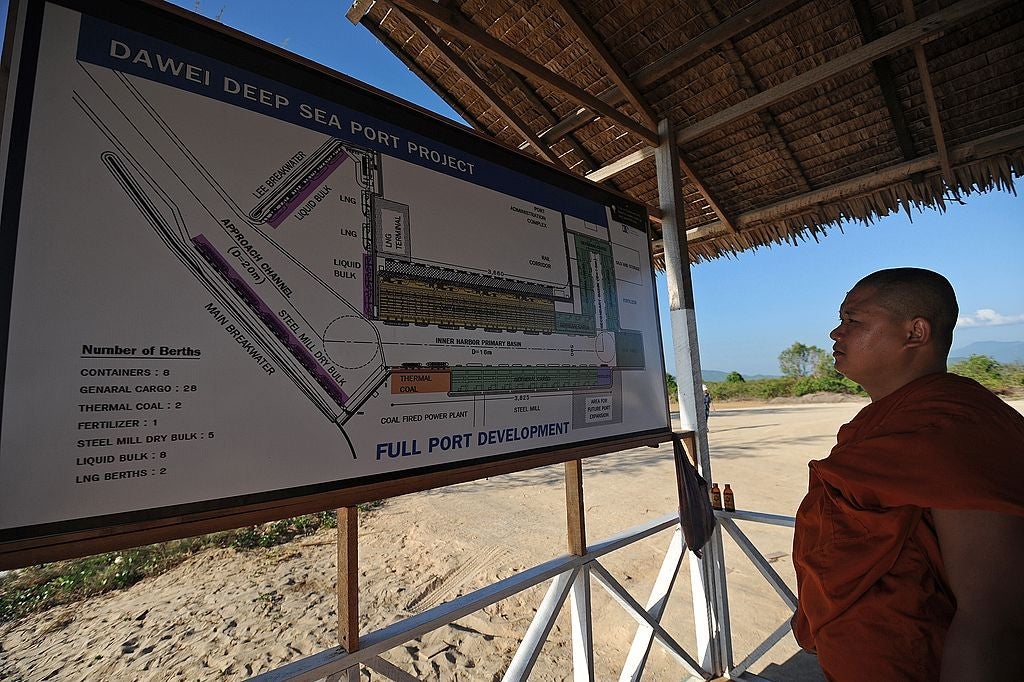

Special economic zones (SEZs) come in a wide range of shapes and sizes, making the task of defining them a challenging one. Using a very broad brush, the following description gives a strong flavour of what an SEZ is and what purpose it serves: a delimited area within a country with a different set of rules when it comes to business, mainly concerning international trade, customs, taxation and regulation, as well as investment conditions.
These relaxed rules create a business environment within an SEZ that is more liberal than that in the rest of the country from a policy perspective, and the SEZ will tend to offer a more effective administrative system.
Claude Baissac is the CEO of consultancy Eunomix, and when writing about the history of SEZs in a World Bank report covering the zones’ impact on Africa he says that these definitions of SEZs do “only partial justice to reality, as some countries make no distinction with regard to taxation in their zones, and others have done away with the geographic spatiality of the zone and have instead made it a purely legal space with applicability across the entirety of the national territory, or large portions of it”.
So what makes SEZs so varied and difficult to define? On that, Baissac identifies four main factors:
• The need to differentiate among types of zones that display very real differences in form and function.
• Differences in economic terminology between countries.
How well do you really know your competitors?
Access the most comprehensive Company Profiles on the market, powered by GlobalData. Save hours of research. Gain competitive edge.

Thank you!
Your download email will arrive shortly
Not ready to buy yet? Download a free sample
We are confident about the unique quality of our Company Profiles. However, we want you to make the most beneficial decision for your business, so we offer a free sample that you can download by submitting the below form
By GlobalData• Zone promoters’ desires to differentiate their product from those of the competition.
• The consequences of multiple translations.
According to the UN Conference on Trade and Development’s (UNCTAD’s) World Investment Report 2020, there are more than 5,400 SEZs in the world across 150 countries. The number has increased substantially in the past few decades, with the number closer to 4,000 in 2015. UNCTAD goes on to report that hundreds of new SEZs are in the planning stage.
Types of special economic zones
The paper Special Economic Zones: Performance, Lessons Learned and Implications for Zone Development by the Foreign Investment Advisory Service, and published by the World Bank, classifies SEZs in six main types:
• Free trade zones (FTZs), also known as commercial free zones, are fenced-in, duty-free areas offering warehousing, storage and distribution facilities for trade, trans-shipment and re-export operations.
• Export processing zones (EPZs) are industrial estates aimed primarily at foreign markets. Hybrid EPZs are typically subdivided into a general zone open to all industries and a separate EPZ area reserved for export-orientated, EPZ-registered enterprises.
• Enterprise zones are intended to revitalise distressed urban or rural areas through the provision of tax incentives and financial grants.
• Free ports typically encompass much larger areas. They accommodate all types of activities, including tourism and retail sales, permit on-site residence, and provide a broader set of incentives and benefits.
• Single-factory EPZ schemes provide incentives to individual enterprises regardless of location; factories do not have to locate within a designated zone to receive incentives and privileges.
• Specialised zones include science/technology parks, petrochemical zones, logistics parks and airport-based zones.
The Colon Free Zone in Panama, founded in 1948, is a prominent example of an FTZ. These are widely considered to be the oldest form of modern SEZs, with activities typically limited to trade-related processes (warehousing, storage, sales, exhibitions) and light processing operations (packaging, labelling, quality control, sorting).
Export processing zones started to appear in the late 1950s to early 1960s, with the Shannon Free Zone in Ireland believed to be the first of its kind.
Most enterprise zones are located in developed countries such as the US, France or the UK. The main point of difference for this type SEZ is that it does not have a specific regulatory regime.
Free ports tend to cover large areas and can even overlap political and administrative units, according to Baissac. China’s large-scale free ports are a common example of this type of SEZ.
Single-factory EPZ schemes are a deviation from traditional free zones and EPZs, in which an individual enterprise is given this status without having to be located in a particularly delimited area. Examples of countries with single-factory schemes are Mauritius, Mexico and Fiji.
From Ancient Greece to colonialisation
Just a ferry trip away from the Instragam haven of Mykonos in Greece lies the island of Delos, in the Cyclades archipelago, the birthplace of the modern SEZ. The Greek historian Polybus – writing in about 150BC – referred to the island of Delos as a free port.
In 167BC, Rome gave Delos free port status for Roman citizens and non-Roman Italians. In 166BC, Rome made Delos a toll-free port. At that point, all the commercial activity of the eastern Mediterranean was concentrated on the island.
Fast-forward to the Hanseatic League, a group of towns and cities that spread across northern mainland Europe to facilitate trade and ended up dominating the Baltic Sea market.
Baissac then points to European colonial expansion and at the role of charters and privileges in trade.
“Most of the early colonial empires were created and administered under that system,” he writes. “Within the territory concessioned, the chartered company exercised a monopoly on free trade. Trading posts were set up – usually at strategic points on coasts and at mouths of navigable rivers – to concentrate trade and resources with the rich hinterlands of the concessioned territories. Hong Kong, China and Singapore were created in this manner.”
Asia at the SEZ vanguard
During the early 1900s, 11 FTZs were functioning around the globe, with seven in Europe and four in Asia. Manufacturing activity only started to take place in SEZs in the 20th century, with zones in Spain spearheading the trend. In the early 1920s, “the zone operating at the Port of Cadiz hosted one of the first Ford Motors plants in Europe”, Baissac’s paper points out.
Protectionist measures during the 1960s and 1970s saw the development of EPZs as a complement to strategies that focused upon import substitution.
“The usually lacklustre performance of these strategies led countries such as Brazil, India, Kenya, Malaysia and Mauritius to create enclaves for foreign-orientated activities,” explains Baissac. “EPZs were expected to absorb surplus labour without immobilising a domestic capital base.”
On the other side of the spectrum, Asian countries such as South Korea shifted their strategies to focus on exports instead of import substitution.
The take of China on SEZs has been long regarded as a success. First established in 1978, “once it became clear that the country was failing to affect economic development through the strategies of the Mao era, the government chose to use the first four SEZs, from 1979 onward, as a gigantic experiment in controlled capitalism in a command economy”, writes Baissac.
Between 1979 and 1995, China became the recipient of 40% of international foreign direct investment (FDI) to emerging economies, Baissac points out, while the country became the largest manufacturing exporter in the world.
What is ahead for SEZs?
As the world adapts to the Covid-19 pandemic, SEZs also face a new set of challenges, according to Douglas van den Berghe, global speaker and expert on FDI, SEZs, competitiveness and innovation.
He says that the international environment in which SEZs operate is changing, with protectionism on rise and new trading blocs emerging, all while FDI is declining. “There will be much more scrutiny towards providing financial incentives because many governments are developing stimulus packages,” he continues.
However, this does not mean that SEZs will be starved of opportunities. Van den Berghe states that zones should collaborate more, not just across borders but also with SEZs within their own country.
“Competition is a component of the economic system, which is the post-Second World War economic system,” says Van den Berghe. “If you look to the future, you can get all these developments that are taking place, under the framework of the UN’s 17 Sustainable Development Goals and under the framework of the Industry 4.0 revolution.”
Reaching these goals and shaking the industry upside down requires collaboration, he adds, pointing out that this joined-up approach is already being seen in much smaller enterprises in the field of digital technology.
Van den Berghe is of the opinion that in the future collaboration will replace competition, and this is something that SEZs need to think about. Being used as a “test and breeding ground for the wider economy” will likely become more common, and policies and measures taken in terms of creating a better and more competitive business environment can be tested in SEZs
“National policymakers will increasingly look at how things are on a microscale within an SEZ and how they can be transferred or implemented at a national level,” Van den Berghe points out.
According to UNCTAD’s World Investment Report 2019, modern SEZs face three main challenges that they need to adapt to:
• The sustainable development agenda.
• The new industrial revolution or industry 4.0.
• The changes in patterns of international production and global value chains.
With the added pressure of the pandemic, SEZs will have to keep finding ways to adapt to the new challenges, perhaps by increasing collaboration among themselves as Van den Berghe advises, and serving as test centres for the economy of the “new normal”.




